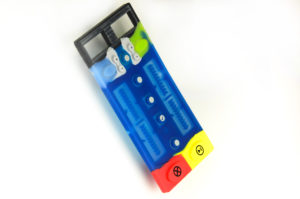
Have you heard of ultraviolet (UV) keypads? Like all keypads, they consist of controllable circuits with one or more keys. Pressing a key will open or close the circuit — typically by forcing two conductive traces to touch each other. Some keypads, however, are designed with a UV resin layer. Known as UV keypads, they are distinguished from other types of keypads in several ways. Below are five facts about UV keypads and how they work.
#1) Cured With UV Light
UV keypads are cured with UV light. As previously mentioned, they feature a UV resin layer. The UV resin layer is the top part of a UV keypad. It consists of a special type of resin that, when exposed to UV light, cures. After being cured, the UV resin layer solidifies while becoming harder and stronger than before.
#2) Supports Textured Decorations
Thanks to their UV resin layer, UV keypads support a variety of textured decorations. Sandblasting, for instance, is commonly used for textured decorations on UV keypads. The top of the resin layer can be sandblasted, resulting in a textured surface. Other types of textured decorations supported by UV keypads include spin lines and brush lines. Textured decorations such as these are applied after the UV resin layer has finished curing.
#3) Superior Protection Against Abrasion
Abrasion isn’t a concern with UV keypads. UV keypads offer a superior level of protection against abrasion. The UV-cured resin layer that features the individual keys is ultra-strong. UV curing changes the physical properties of the resin. The end result is an ultra-strong top layer that’s protected against abrasion.
#4) Moisture Resistant
UV keypads are moisture resistant. They still contain a circuit. Some of them have a rigid printed board (RPB), whereas others have a flexible printed circuit (FPC). If the circuit is exposed to moisture, it may sustain permanent damage. Fortunately, UV keypads are moisture resistant. The UV resin layer will shield the underlying RPB or FPC so that moisture is unable to reach it.
#5) Dual-Surface Foil Subtrate
All UV keypads consist of a foil substrate. The foil substrate is the layer to which the UV resin is applied, and thus, cured. The foil substrate, however, doesn’t feature a single surface; it features two surfaces. The UV resin layer is applied to the first surface. The textured decoration, on the other hand, is applied to the second surface.
